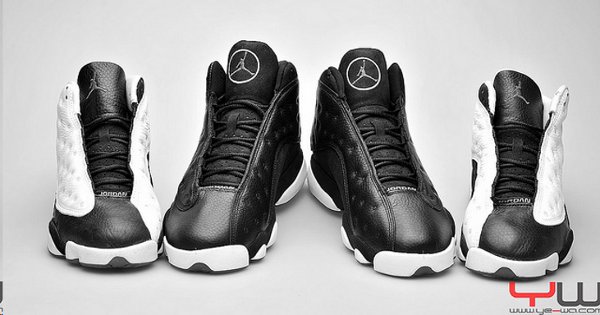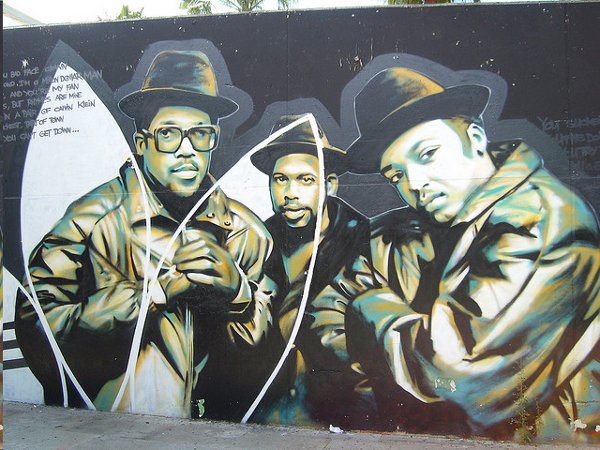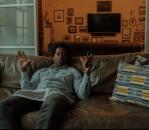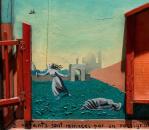Sneakerheads: The Rise of Sneaker Culture in the U.S.

“Yo, it’s Mars Blackmon here with Aladdin’s lamp!”
Standing on a basketball court -- sporting a training jersey, thick-rimmed glasses, and a black cycling cap with a flipped-up brim -- a young Spike Lee rubs a smoking oil lamp.
“Poof,” appearing with a tall turban wrapped around his Jerry curls, and donning a pair of curled-toe genie shoes outfitted with a Swoosh - Little Richard concedes Blackmon only one wish:
“A million dollars?”
“Nah -- tax problem.”
“A new car?”
Blackmon shakes his head, “Can’t drive.”
“I got it!” adds Blackmon.
“A whop bop-a-loo bop a whop bam boom!”
Mars Blackmon magically reappears through a screen of smoke in a pair of black Air Jordan IV’s and is now able to dunk effortlessly.
“Look mom, I can fly,” shouts the new and improved Blackmon while hanging from a rim.
Mars Blackmon, a fast-talking bike messenger from the 1986 film She’s Gotta Have It, played by writer, director, and sneaker enthusiast Spike Lee was the voice and pitchman in a series of black-and-white Nike commercials promoting the Air Jordans in the early 90s.
These 30-second spots represent a trend in pop culture that saw sneaker advertisements become more than just a touting of creative design and a flaunting of celebrity endorsement, but rather an affinity with the uninitiated athlete established through funky characters and colorful language.

The Fathers of Ragtops
Although we owe tribute to Keds for being the first athletic shoe on the scene, the spotlight falls upon Marquis Converse and Charles H. “Chuck” Taylor…well, on their Converse All-Star line to be exact.
“Before there was an ‘old school,’ Converse, and the game’s pioneers who played in our shoes, set the benchmarks against which others aspired to reach. Converse is The First School, the true owners of the soul of the game,” read an official statement made by Converse on InsideHoops.com, a website dedicated to basketball fans.
More than a player, Chuck Taylor was a teacher and “Ambassador of Basketball,” in the words of Converse. Throughout the 1920s, he traveled the U.S. teaching and mentoring the first professional basketball teams, and by the time the National Basketball Association was formed in 1949 the Converse All-Star had become its unofficial sneaker.
Later, the 50s and 60s brought about the greasers and rockers dressed à la James Dean and shod in the Jack Purcell tennis shoe; by the ‘70s Converse shoes had already become embedded in American pop culture and were offered in an array of colors and designs to meet demand.
Although they remain a staple in American-wear and are the go-to casual shoe, advances in design technology pushed the simply constructed canvas and rubber Converse outside of the athletic shoe market -- the final shove coming from Nike in 2003, when it bought out the bankrupt company for $305 million dollars, according to a business report published by the New York Times (Wayne, Leslie, July 10, 2003).

Kicks on the Court
Adidas, Nike, and Reebok dominated the sneaker wars of the ‘80s and ‘90s, but before them it was Pro-Keds and Puma Clyde’s that Pro-ball players sought out. Nonetheless, as impactful as these designs were, neither would be as paramount on and off the court as the Air Jordans.
In an unprecedented event, in 1984, Michael Jordan signed a $2.5 million endorsement deal with Nike during his rookie year when he had not yet reached his “superstar status” and was not considered a commodity. Even more scandalous was the $5,000 dollar fine Jordan would accumulate every game for breaking regulation and adding a little flare to his Air Jordan I’s with a red on black color scheme, paving the way for colorful basketball sneakers.
Nike wasn’t a stranger to innovation in athletic shoes either. The Air Sole technology, created by aerospace engineer Frank Rudy that included a pocket of air in the heel for cushioning and support, had been first incorporated into its Air Force One’s and later in its Air Max design, which hit the market with the Beatles song “Revolution,” sung by the group itself specifically for the commercial.
Competitors didn’t lag far behind. Around the same time Reebok introduced its Pumps featuring a standout tongue with a round orange pump that inflated the air cushion in the sole, which was supposed to increase jumping ability. Of course, they could never have reached icon status without a bit of exposure from a Pro-baller, such as DeCovan Kadell "Dee” Brown of the Boston Celtics, who was seen pumping up his Reeboks on the court right before he took off to make his no-look dunk, along with others that won him the ’91 NBA Slam Dunk Contest.
The birth of Hip-Hop
“I wear my Adidas when I rock the beat
on stage front page every show I go
it's Adidas on my feet high top or low”
-Run DMC
The old-school legends of hip-hop were as much of an influence on what people wore as the Pro-ballers; artists from East to West, like Run DMC, Beastie Boys, LL Cool J, Salt-N-Pepa, NWA, Ice-T, and others, formed their own style of urban street wear that centered around their shoes.
“On trains, cats would stand in front of the doors in a B-Boy (Beastie Boy) stance with their heels touching but their toes pointing as far as possible. Then, the ‘hard rocks’ would take up two seats with their legs open…the sneaker which best exemplified this bravado was the Clyde,” writes Bobbito Garcia in Where’d You Get Those? New York City’s Sneaker Culture: 1960-1987.
While the Beastie Boys wore Adidas Campus with track suits, Run DMC flashed their shell-toe Superstars and rapped about it, adding personality to the sneakers -- a personality that fans loved. This tradition would be handed down from one generation of rappers to the next, as is notable with hip-hop artist Nelly and the Air Force One’s, which became largely popular off the court because of its value in urban fashion.
Sneakers for All
Even though most big brands made a name for themselves in one particular sport (Tennis had Adidas and FILA, soccer had Puma, basketball had Nike and Converse, etc.), they all conquered the athletic world and developed specialized shoes for professionals and amateurs indiscriminately.
For the less mainstream and for the up-and-coming sports there have emerged popular alternatives to cater to the needs of these enthusiasts, as well.
Since the ‘70s, Vans has become synonymous with skaters. Then, there are those who prefer to go without the extra padding, ankle support and air pockets in the sole -- these minimalists consider themselves well-served by the Vibram FiveFinger shoes. The socially conscious turn to Toms, a nascent company out of Santa Monica that gives a pair of shoes to impoverished children for every pair bought.
Rappers are no longer just walking advertisements either, but have become crucial in the development of urban fashion. Nike’s Air Yeezy’s, designed by Kanye West, for example, had a face value of $245 USD and a pre-ordered pair sold on Ebay for $90,000 in 2009, according to TMZ.
Author Bio:
Yolian Cerquera is a contributing writer at Highbrow Magazine.
Photos: Michael Wa, Juan Ma Ruiz, Naoya Fuji (Flickr, Creative Commons).





























































































































































































































































































































